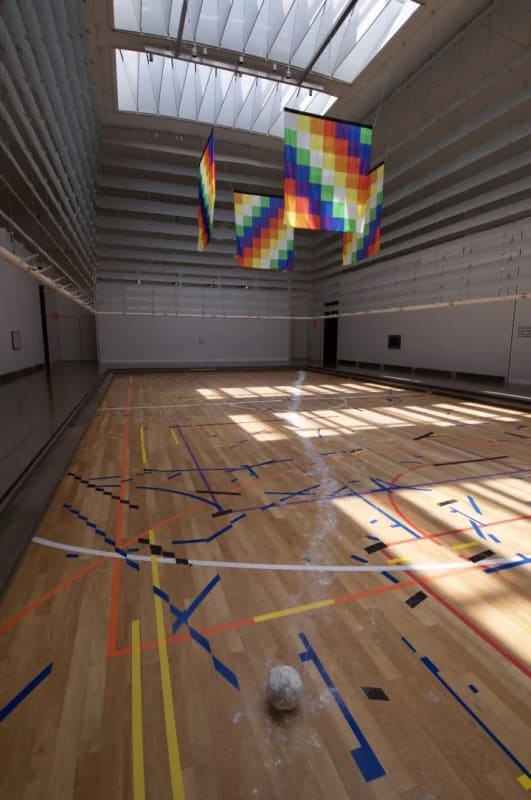Ronny Quevedo’s no hay medio tiempo / there is no halftime exhibition at the Queens Museum revolves around a polychromatic line drawing, rendered in vinyl tape, on the polished wood floor of the museum’s atrium. Many smaller works, including digital prints, embossed paper pieces, and custom-printed nylon works, hang on the periphery and deserve their own discussion, but I want to focus on the floor drawing. It depicts the markings one would typically find on a field or court, configured for playing an organized game. Quevedo references basketball, soccer, volleyball, and handball courts, but the indicia are fragmented, lain one on top of the other, which Quevedo tells me is about breaking down barriers and seeing these spaces as negotiable.
Quevedo, like me, is an immigrant. He was born in Guayaquil, Ecuador to a father who played soccer. He understands that the marks indicating the boundaries and zones of a particular game are also employed in a territorial fashion when drawn in a public space: they are about claiming that space, conveying to all that certain rules will apply to it once enough players who are ready and willing to participate are present. Once the game begins, the space is transformed into a formal one for contest, concealing all the ones that preceded it, a cycle that will continue once this game is over.

